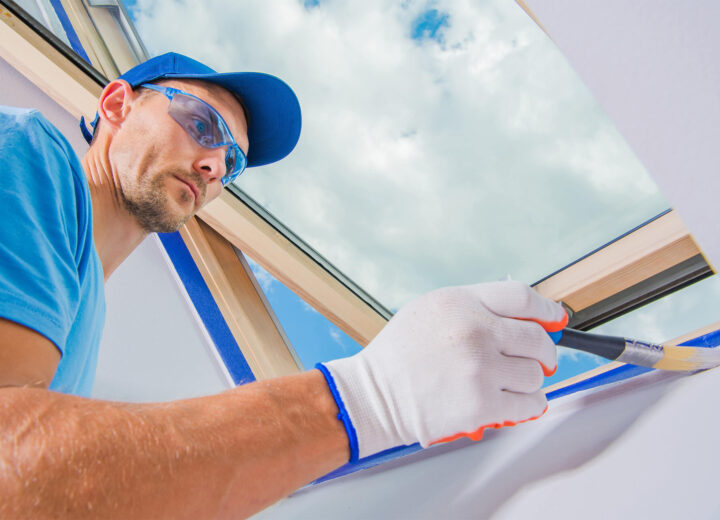Over the years, professional painters have developed a series of unique wall painting techniques that homeowners can use to spice up the aesthetics of their homes and add personality to their interiors. Use the painting techniques described below to achieve the best results.
Ragging and Sponging
Also referred to as rag rolling, the ragging technique involves painting your walls a selected base color and applying a lighter or darker glaze mixture with a rag after the base coat has dried. Starting in an upper corner, roll the rag onto the wall in a circular motion, dipping the rag into the glaze mixture as necessary. Replace the rag once it becomes saturated with glaze. Sponging is another decorative wall painting technique you can opt for to create a weathered, worn effect. Following the same technique but replacing the rag with a sponge, you can give your walls a more textured appearance. Both wall painting techniques are ideal for traditional and country style decorating. For a modern, contemporary look, replace regular glaze with a metallic paint. 
Smooshing
Smooshing is an interesting wall painting technique that gives a simple yet spectacular marbled effect to walls. Start by applying a base coat to your walls and letting it dry completely. Prepare the glaze mixture and apply it to one wall (or one section of the wall) at a time, as quickly as you can. Cover the freshly painted surface with a plastic drop sheet, smoothing it against the wall. Then, wrinkle the sheet along the wall and remove it carefully. For the best result, use a fresh sheet of plastic for each wall.
Dry-Brush Painting
Dry-brush painting is one of the simplest wall painting techniques you can use to transform your interior into a modern living space. Apply a base color to the entire wall surface. After the paint dries out completely, dip the tip of a brush into the glaze (don’t use too much paint; the brush should be relatively dry), hold it against the wall, and paint a stroke up to 12 inches long, forming a 45-degree angle with the edge of the wall. Following a “X” pattern, paint a second stroke in the opposite direction. Let the first coat dry, then paint a second coat in the same pattern, moving down a little bit to avoid repainting the finished area. Repeat the same steps until you cover the entire surface.
Ombré
Ombré defines a gradient style of coloring, which gives rooms a vibrant, unique finish. For perfect results, measure the entire wall and divide it into equal sections. Choose three, four, or five variations of a paint color or different colors that are placed next to each other on the color fan deck. Paint your walls from the bottom up, starting with the darkest shade. You can also paint vertically, fading from the middle of the wall toward its edges. The purpose of this painting technique is to create a gradual, pleasant transition from a strong hue to a soft tint.
Before opting for any of these wall painting techniques, make sure that you clean your walls thoroughly, repair cracks and holes, sand away imperfections, remove the sanding dust, and prime the surface before applying the base color. Additionally, choose an oil- or water-based glaze compatible with the base coat.
Whether you want to find out more about the art of beautifying your home or you’re looking for a team of reputable, experienced painters who can successfully complete any painting project, we invite you to contact our friendly professionals at Performance Painting, Jacksonville, FL.






